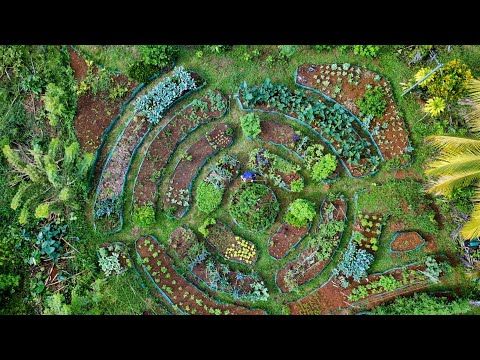
Vegetable gardens are a fantastic way to enjoy fresh, organic produce right from your backyard. However, in order to have a successful vegetable garden, it is important to plan out the design and layout of your garden. A well-designed vegetable garden not only looks beautiful, but also ensures that your plants will thrive and produce a bountiful harvest.
The first step in designing a vegetable garden is to choose a sunny location. Most vegetables require at least six hours of sunlight per day, so it is important to pick a spot in your yard that receives ample sunlight. Avoid areas that are shaded by trees, buildings, or other structures, as this can hinder the growth of your plants.
Next, you’ll need to decide on the size and shape of your vegetable garden. Consider how much space you have available and how many vegetables you want to grow. Raised beds are a popular choice for vegetable gardens, as they provide good drainage and are easier to maintain. You can also opt for traditional row planting or square foot gardening, depending on your preferences.
When planning the layout of your vegetable garden, consider the needs of each plant. Some vegetables, like tomatoes and peppers, require staking or trellising, so be sure to leave enough room for support structures. Consider planting taller vegetables, like corn or pole beans, on the north side of your garden to prevent shading of smaller plants.
Companion planting is another important factor to consider when designing your vegetable garden. Certain plants have beneficial relationships with each other, such as repelling pests or improving soil fertility. For example, planting marigolds near tomatoes can help deter pests, while growing beans near corn can provide nitrogen to the soil.
It is also important to consider the layout of paths and walkways in your vegetable garden. Paths should be wide enough for easy access and maintenance, and should be made from a durable material like gravel or mulch. Consider adding a small seating area or a bench to your garden, where you can relax and enjoy the fruits of your labor.
Incorporating vertical gardening techniques, such as trellises, arbors, or hanging baskets, can help maximize space in your vegetable garden. Vertical gardening also provides support for climbing plants and can add visual interest to your garden.
Overall, a well-designed vegetable garden takes into account the needs of each plant, the layout of the garden beds, and the overall aesthetic of the space. By carefully planning out your vegetable garden design, you can create a beautiful and productive garden that will provide you with fresh, healthy produce all season long.
 Garden Ideas
Garden Ideas









